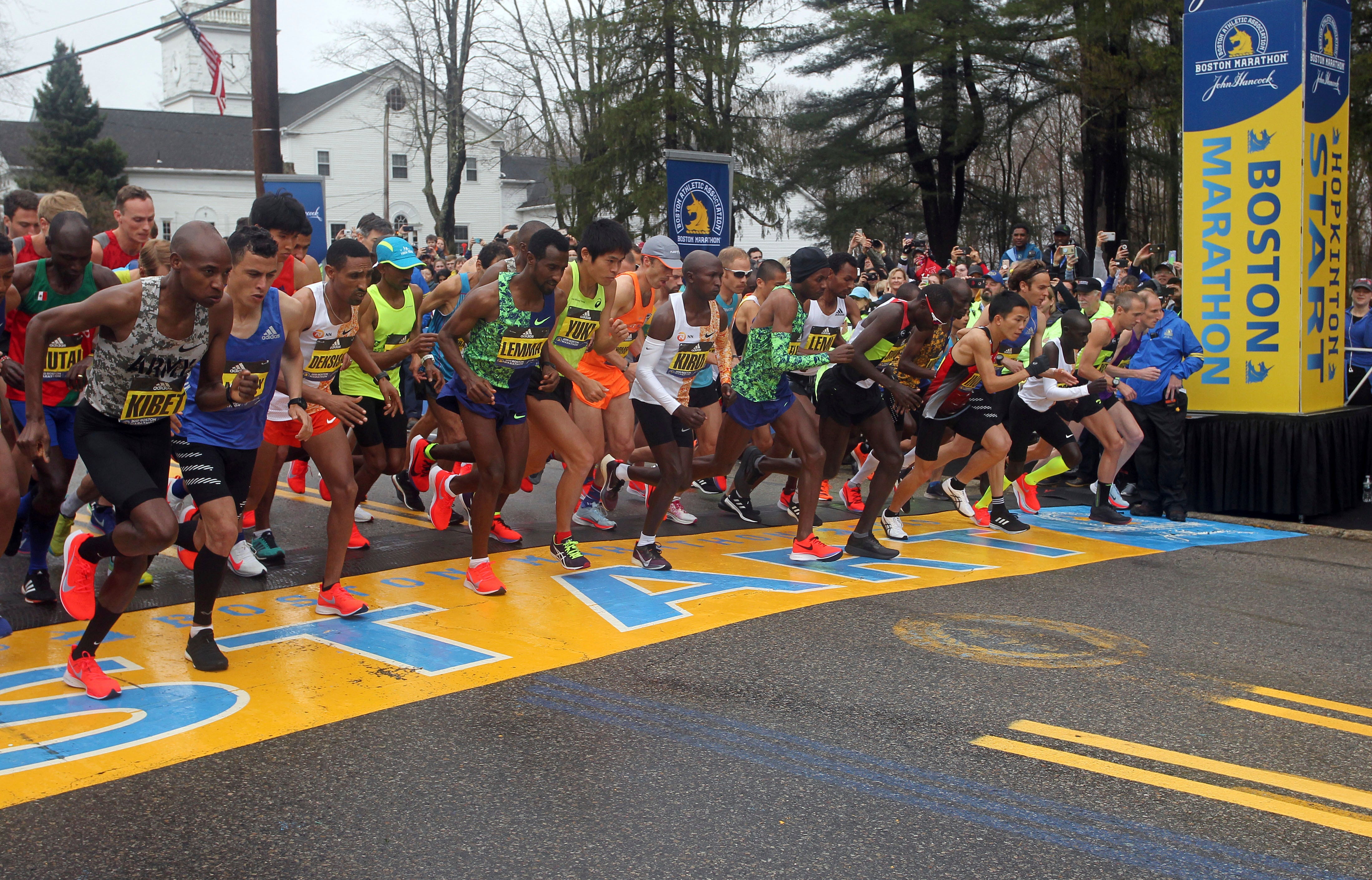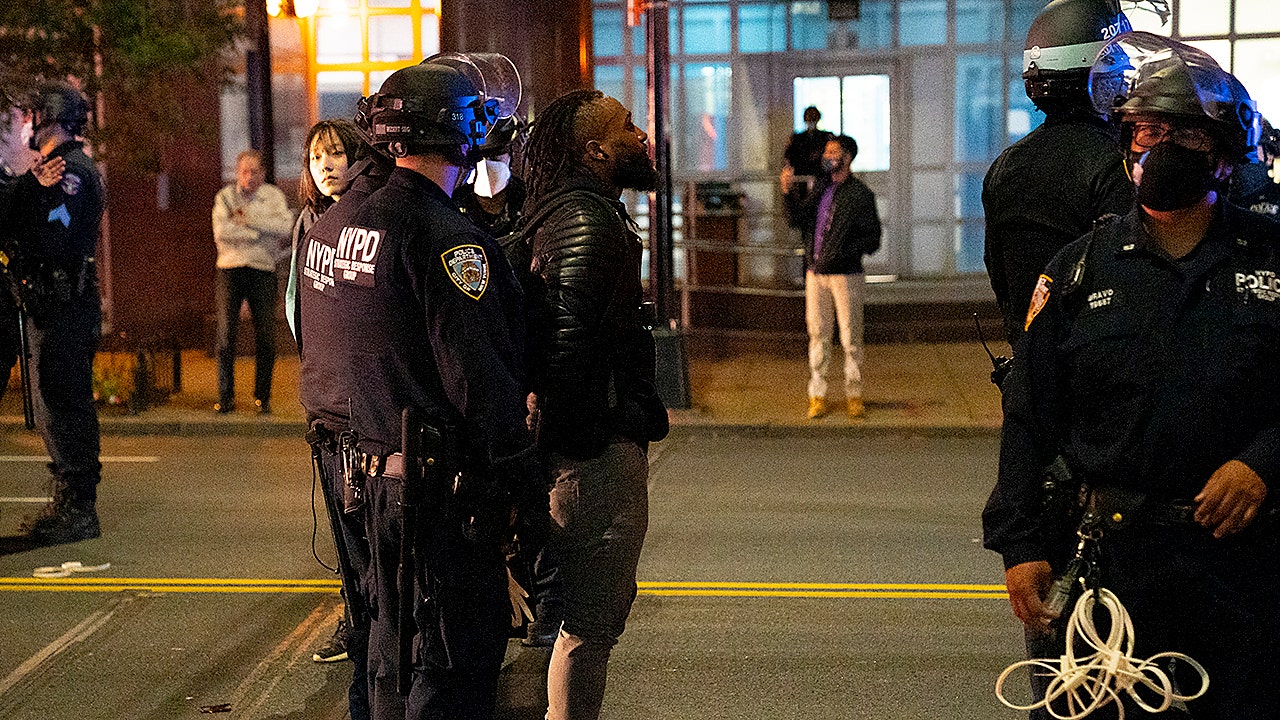from BBC News - World https://ift.tt/3jN7oMa
News From All Around the World
Plus, Lamar Jackson’s rematch with a Steelers D that shut him down, Patriots on the brink, why the Jets would be fine for Trevor Lawrence, and more.
1a. I’ve long wondered why “Rainbow Connection” starts with the line “Why are there so many songs about rainbows/And what’s on the other side?” when there’s really only one song anyone is familiar with that even tangentially deals with that subject matter. It seems that is more placeholder lyric rather than the iconic opening line of an iconic song.
I’ve also long wondered if, because he’s not just a uniquely wonderful quarterback but also a wonderfully unique quarterback, NFC West opponents have more success containing Russell Wilson than teams who prepare for him less often. Take this with a grain of salt due to (1) small sample size, and (2) the fact that the NFC West has been an especially strong division in recent years, but here’s Wilson’s numbers in intra- and inter-division play over his career:
Vs. NFC West: 7.55 yds/att, 23.6 PPG, 29-20-1 record (.590 win percentage)
Outside division: 8.17 yds/att, 26.1 PPG, 71-28 record (.717 win percentage)
And since 2018:
Vs. NFC West: 7.54 yds/att, 26.1 PPG, 6-7 record (.462 win percentage)
Outside division: 8.53 yds/att, 27.1 PPG, 21-7 record (.750 win percentage)

I bring it up because, on paper, Wilson and the Seattle offense should do whatever they want against a 49ers defense decimated by injuries (Nick Bosa and Dee Ford, plus they might be without both starting safeties again this year). Yet, you could have said the same thing about last Sunday night’s matchup against the Cardinals, in which an Arizona defense without Chandler Jones was lacking any semblance of a pass rush, and one of their top three corners (Dre Kirkpatrick) was hobbled to the point of barely being mobile.
The Seahawks did roll up 572 yards in that game, but they also punted three times, settled for field goals twice and turned it over three times which, with their defensive shortcomings, won’t get it done. More specifically, as the game went on Russell Wilson became increasingly uncomfortable to the point of being borderline frazzled by his final snap. A lot of that was due to defensive coordinator Vance Joseph pushing the right buttons, something Niners DC Robert Saleh might have learned from.
Last Sunday night was a strange performance overall for Wilson. Two or three times every season, he commits what can only be described as a spectacularly boneheaded turnover. Normally he spreads them out over the course of the season (and, obviously, the mistakes you can count on one hand are more than canceled out by the other 1,014 snaps during which he’s fantastic).
On Sunday night, the Cardinals defense—that, again, was physically incapable of matching up with Seattle’s offense—often did a nice job erasing the tight end rolling with Wilson on those staple play-action bootlegs. That, plus Patrick Peterson mostly locking down DK Metcalf, might have made Wilson feel the need to force things more than usual. The red-zone interception (the one everyone forgot about because of the Metcalf chasedown) was a woefully miscalibrated throw on a unique play where the defense was unprepared for the snap—just not that unprepared. The second pick looked like Wilson wanted Metcalf in a jumpball situation but Metcalf wasn’t on the same page.
But the Seahawks’ second (and final) overtime possession is when the Cardinals appeared to have Wilson shaken. Joseph had been rolling the dice with the blitz after halftime, mostly with Budda Baker, to mixed results. On the first play of this series, safety Deionte Thompson doesn’t get there in time for the sack but lays a hit on Wilson, sending the quarterback headfirst into a lineman’s backside. You can see that Wilson is slow to get up. On the very next play, the Cardinals send six and the result is linebacker Tanner Vallejo coming free and drilling Wilson. (To be fair to rookie RB DeeJay Dallas, the Cardinals had been putting linebackers in that A-gap all night but dropping out, so it’s understandable that he had his eyes on the other side of the formation. Still, it wouldn’t be a bad idea to send Russ a Vermont Teddy Bear. The “Beary Sorry My Pass Protection Mistake Resulted In Your Rib Cage Being Caved In” Bear—he has little eye black on!)
Those two hits were followed by the quick-screen to Metcalf that was erased by a holding call, pushing Seattle back into third-and-14. That brings us to Wilson’s third interception of the night.
Arizona shows pressure but only brings four—the protection is sound. The Cardinals are playing the sticks, and even Seattle’s receivers don’t expect the ball to be put into a spot that has virtually no chance of ending in a completion. Maybe I’m failing to understand something—there’s a lot I don’t know about football—but Wilson’s final throw of the night is either a result of confusion (did he think the blitz was coming and was throwing hot?) or hopelessness (lemme chuck a 50/50 ball and let’s get out of here).
I lay this all out in part because I get paid by the word. But it’s also to point out that the 49ers, like the Cardinals, are finding their way defensively after key injuries. Saleh has done more blitzing out of necessity this year, and blitzing Wilson is playing with fire (and Seattle presumably worked on those protection issues this week). But dialing the right one up at the right time could allow the 49ers to contain—or at least create some plays—against a Seahawks offense that is just better than them.
* * *
2a. The worst start of Lamar Jackson’s career came last season at Pittsburgh, his only game against the Steelers (he didn’t face them as a rookie and sat out last year’s Week 17 matchup that was meaningless for Baltimore). Jackson took five sacks, threw three interceptions and the Ravens averaged 3.8 yards per play. (They won in overtime; it was a Mason Rudolph/Duck Hodges game.)
After that dud, Jackson spent the subsequent two months establishing himself as the best football player on the planet, but the issue is going to be the same for him and the Ravens offense against Pittsburgh: They can’t beat this Steelers defense in the trenches. Marshal Yanda’s retirement left a gaping hole at right guard; rookie Tyre Phillips has mostly been a liability so far, and that likely won’t change going up against Stephon Tuitt. But Baltimore might have issues on the other side of the line as well. Left guard Bradley Bozeman has been solid in 2020, but he’s going to have a tough time handling Cam Heyward.
The Ravens have sunk to 22nd in the league in average yardage on first down, and they’ve gained four-plus yards on just 45% of their first-down plays, 26th in the league. Pittsburgh, meanwhile, has been historically great as a first-down defense. Playing behind schedule is not where Jackson and the Ravens want to be, especially as they try to iron things out with the passing game.
2b. Conversely, Ben Roethlisberger has always struggled in Baltimore. And, if this is a low-scoring game, it’s always nice to have Justin Tucker on your side.
* * *
3a. Carlos Dunlap and Seahawks are like this generation’s Ross and Rachel, in that we all knew they’d end up together and also because Pete Carroll used to look like an older David Schwimer (now he looks like a contemporary David Schwimmer*). The Seahawks are desperate for some kind of edge-rushing presence, and Dunlap, who is some kind of edge-rushing presence, was desperate to get out of Cincinnati.
Thus, Seattle is an early trade-deadline winner, and John Schneider’s congratulatory Blimpie’s coupon is already in the mail. Detroit also did well to get Everson Griffen, who’s had his ups and downs the past two seasons but can be an effective complementary pass-rusher over limited snaps—and Detroit, like Seattle, very much needed to address their pass rush.
With that in mind, a few other deals that should happen if everyone plays it smart:
Browns TE David Njoku to Philadelphia: The Eagles can’t be banking on long-term health for Zach Ertz or Dallas Goedert, and even if one of them returns this offense has room for multiple tight ends. Picture Njoku getting the targets that are currently going to Richard Rodgers. (And while the Browns aren’t sellers, Njoku has no future there behind Austin Hooper and Harrison Bryant.)
Patriots CB Stephon Gilmore to Buffalo: The Patriots seem ready to move on from Gilmore, and they might as well made the deal immediately after the game if they lose in Buffalo on Sunday—that way they don’t have to worry about who’s going to drop Gilmore off at South Station to catch a Greyhound Tuesday morning. It’s been a down year for the reigning Defensive Player of the Year, but even if you think Gilmore will fall off exponentially from his current level he’s still a significant upgrade at Buffalo’s No. 2 corner spot.
Falcons G James Carpenter to Chicago: This is it, guy. The Bears’ quarterback situation is screwed up beyond recognition and there’s no way to solve it right now. But this defense isn’t staying good forever, and you’ve already got five wins in your pocket. James Daniels is done for the year, but addressing the interior offensive line and someone telling David Montgomery to move forward after breaking a tackle rather than standing in place until more defenders come might be the best chance of having some semblance of a functional offense. Adding Carpenter gives you that chance. (Bonus points if you also turn back to Mitchell Trubisky in December and install a Tebow-style read-option offense for two months.)
Football Team QB Dwayne Haskins to Pittsburgh: Washington isn’t serious about developing him, so send Haskins to a team where he fits the offense and can, maybe, in two years play in the right system, with the right weapons, behind a quality offensive line, and actually hit his ceiling.
Jets LB Avery Williamson to Miami: Now’s your chance, Dolphins, before the Bills take the next step toward AFC royalty, the Patriots restock, and the best QB prospect in nearly a decade lands with the asset-rich Jets. Win the division now! Miami has had the worst first-down defense in football (league-worst 7.5 yards allowed per first-down play, including 5.6 yards per rushing attempt). Williamson has some limitations in coverage, but he’d push Elandon Roberts into a reserve role (his rightful spot) and immediately upgrade this run defense.
Bengals WR John Ross to Seattle: They already dealt a Day 3 pick for Dunlap, but you figure Ross could be had for a late-round pick swap. Ross would return to his old college stomping grounds, and I’d just be curious to see him run a half-dozen 9-routes with Russell Wilson every week. There’s a play or two to be had this season, right?
Falcons WR Julio Jones to Atlanta in a recommitment ceremony: If you’re lucky enough to have a Julio Jones in your organization, you give him a thousand-year contract and let him play as long as he wants to.
*—Is the actor’s last name spelled with one or two M’s? Think you have what it takes to solve this week’s episode of Football Things Murder Mystery Theater? We’ll reveal the answer… right after this!
* * *
4. Participating in the 2020 NFL season seems like a limited amount of fun for players. And it would seem like even less fun if you are a veteran player used to competing for Super Bowls on an annual basis but are currently sitting at 2-4 and led by a quarterback who has had major issues throwing a football the past two games.
Yes, Bill Belichick’s defense has issues. But the Patriots’ biggest problem is that, after such a promising start, Cam Newton 2020 has looked a lot like Cam Newton late-2018, when his typically violent throwing motion transformed into something downright laborious due to a lingering shoulder issue. Cam has looked every bit as bad as his numbers suggest since returning from the COVID list, and he’ll be without Julian Edelman and N’Keal Harry on Sunday, when the Patriots make a trip to Buffalo for a game that could very well determine the trajectory of their season. After a humiliating loss to the 49ers last week, will the Patriots show up?
First, two wholly unsurprising facts about the Patriots and Bills: 1) the Bills are 3-29 against New England since 2004—and one win was when the Patriots were starting then-rookie-third-stringer Jacoby Brissett, while another was a meaningless Week 17 game in which New England pulled their starters at halftime. And 2) the Patriots defense has largely dominated Josh Allen in three matchups—Allen’s 56.4 passer rating against New England is the lowest against any opponent regardless of sample size, and Buffalo scored a total of 39 points over those three games.
That said, Allen was better in their Saturday night matchup in Foxboro last December, and has followed up a Year 2 leap to “quality starter” with a Year 3 leap to “borderline superstar.” Stefon Diggs wasn’t there last season but will be this year, and Stephon Gilmore, who suffered a knee injury in practice this week, might not.
One of the most overlooked storylines of the season is Buffalo’s sudden defensive struggles, especially against the run. Sometimes it’s been a schematic decision—like when they played with basically three men in the box against Patrick Mahomes. But there’s no doubt stopping the run has been an issue, and they could be without LB Matt Milano and DT Quinton Jefferson on Sunday. Josh McDaniels presumably spent the week further expanding the rushing attack to take advantage, and right now the less throwing Newton has to do the better.
If the Bills win on Sunday, they’ll not only have a minimum game-and-a-half lead in the AFC East (two-and-a-half if the Dolphins lose to the Rams), but a 4-0 record against division opponents. If the Patriots win, they pull within a game-and-a-half of Buffalo, with a home game against the Bills to come, as well as 2-0 against the AFC East with both Jets games still on the schedule. That puts a 12th consecutive division title well within reach.
But if the Patriots lose, and Newton continues to struggle, in a year when they already had a collection of starters opt out, they might as well sell at the deadline and embrace their also-ran status.
* * *
5a. The talk has already begun that Trevor Lawrence pull an Eli and refuse to play for the Jets if they draft him, so three things: 1) He’d look great in green, an absolutely perfect shade for those golden locks, 2) No one is trading the first pick—Lawrence is a potential generational talent who will play at least three seasons at a discounted rate and there is no compensation for that except maybe Patrick Mahomes, and 3) The Jets are not any worse off than recent worst teams in football.
A year ago, the Jets were 7-9, including 7-6 when starting QB Sam Darnold was actually in the lineup. They have a potential franchise left tackle in place (Mekhi Becton). Perhaps we’ll find out they have something in Denzel Mims. Next year, the defense will bring back LB C.J. Mosley, who was supposed to be that unit’s nerve center this season (and last year). And if they do own the No. 1 pick, the Jets will also have two more picks in the top 33, and (excluding the No. 1) five more in the top 100. Potentially six more if they’re dealing Darnold.
Also, first-year GM Joe Douglas learned a tough lesson last offseason: You can’t play the “only at the right price” game when you’re a losing franchise. The Browns did that for years and discovered it’s the kind of thing that leads to, say, four wins over a 48-game span. Douglas bowed out of the Jack Conklin bidding and, more problematically, got outbid on his own very reasonably priced free agent, Robby Anderson. Conklin would have given them a quality long-term answer across from Becton, and Anderson is a far better receiver than anyone on this roster.
The silver lining is that the Jets are projected to have a league-leading $82 million in cap space in an offseason where most teams will be up against it. So along with the potential for immediate help in the draft, they can and should absolutely be ready to overpay for a top lineman (Brandon Scherff, Joe Thuney) and whatever else might be out there.
5b. The Jets’ biggest rival for Lawrence is Jacksonville. The Jaguars just spent two years alienating their star players; they fired Tom Coughlin and told everyone it was 100% Coughlin’s fault. But right after Coughlin was gone, they used the
free-agency-cancelation tag to hold another star player, Yannick Ngakoue, hostage for five months. And during all the unpleasantness they decided their new tack would be to not only treat players shabbily, but take to social media to taunt players over the aforementioned shabby treatment. (Though in their defense that is a change in company policy; Coughlin was never known for his Twitter beefs.) Anyway, is that preferable to the Jets?5c. The real solution for avoiding these potential Eli situations is to abolish the draft. The salary cap and scheduling system already serve as mechanisms to promote competitive balance—also holding a draft is like going belt and suspenders and then using binder clips to attach your pants to your shirt and underwear.
Give all teams a rookie contract pool (all contracts three years, fully guaranteed), let prospects sign where they want. You also get the added bonus of discouraging tanking. But best of all for the league, it would create the greatest spectacle in television history: rookie signing week. It will have to wait until the next CBA in 2030, but maybe by that point the NFL will be interested in making some real money.
* * *
6. The answer to this week’s Football Things Murder Mystery Theater: Three M’s. David Schwimmmer. Just kidding. I think it’s two M’s. With all the time I devoted to this nonsense bit, you’d think I could’ve looked it up. But seeing as you’ve read this far down in the column, who are you to lecture anyone about managing their time?
As long as you're still here, enjoy a great band's very good song that they don’t play anymore…
* * *
7. Ladies and gentlemen . . . Radiohead!
• Question or comment? Email us.

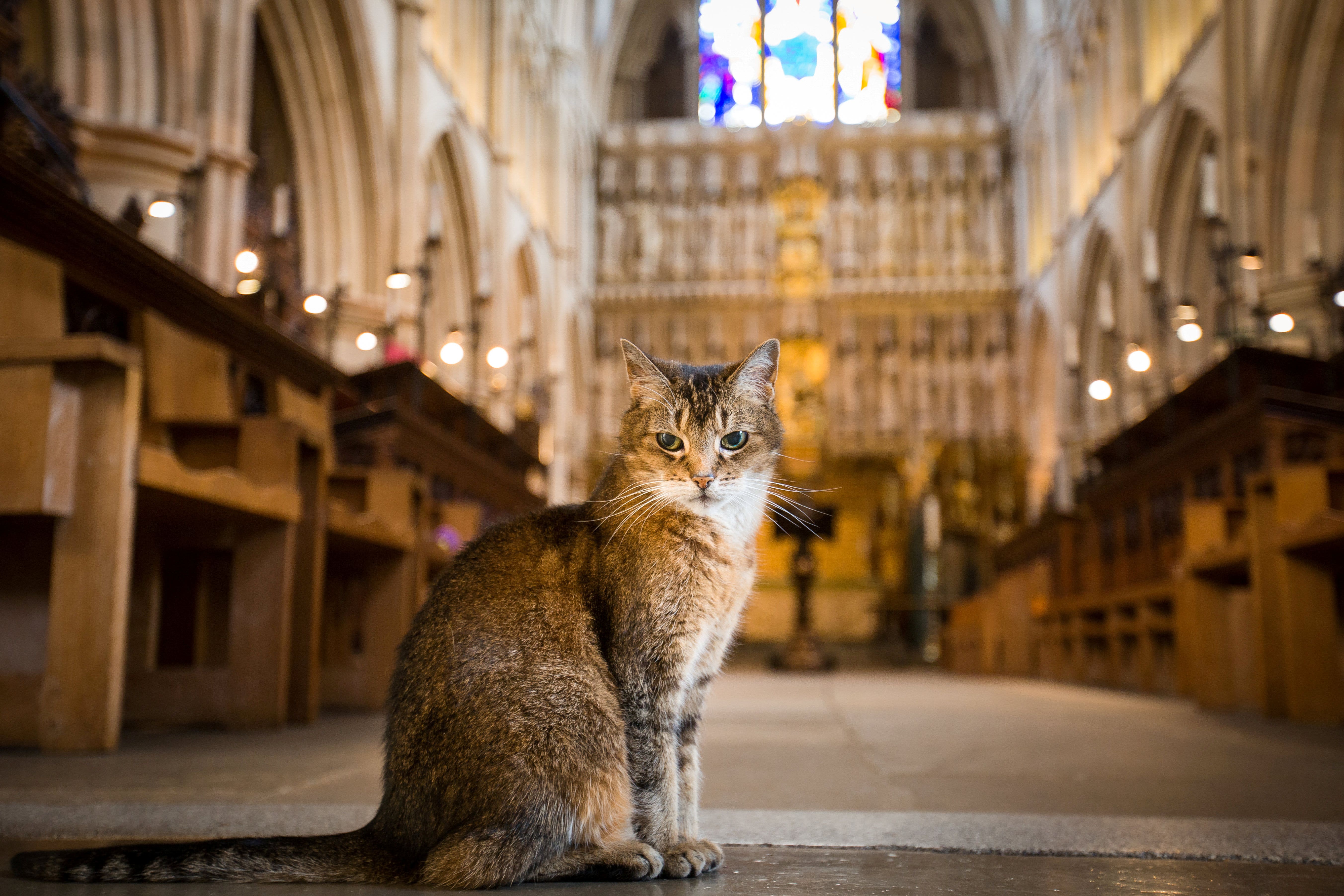
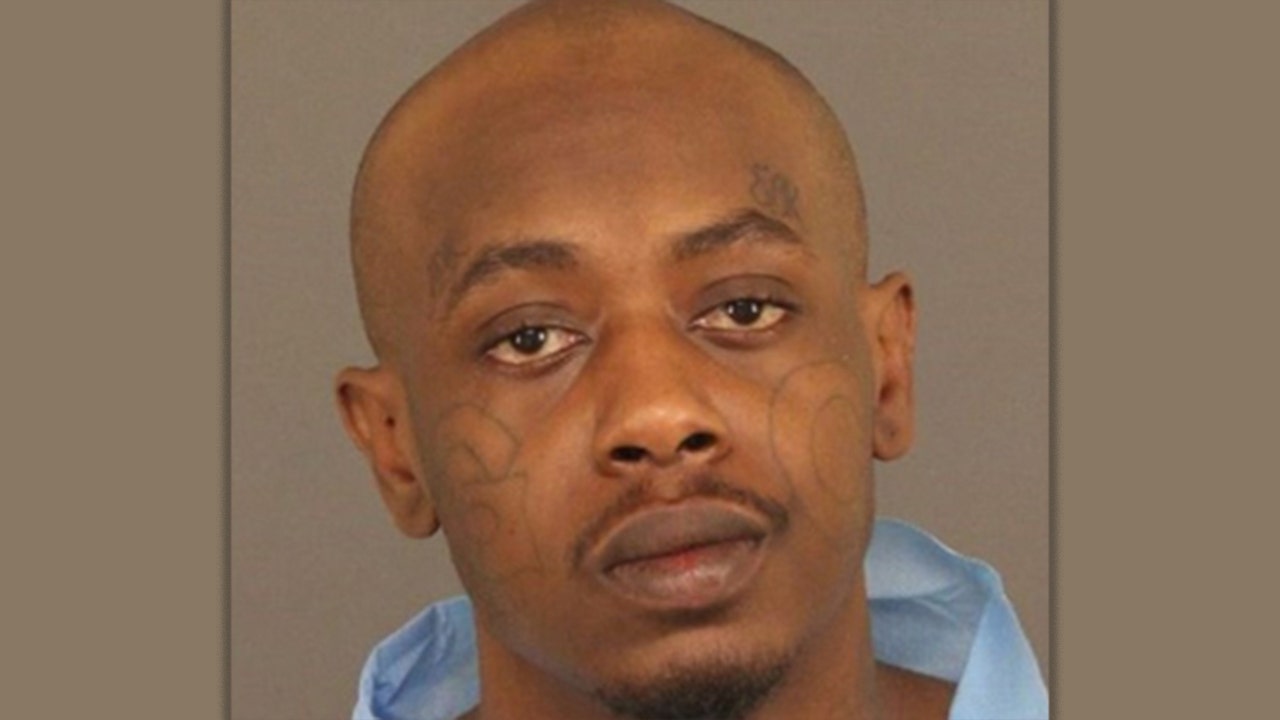





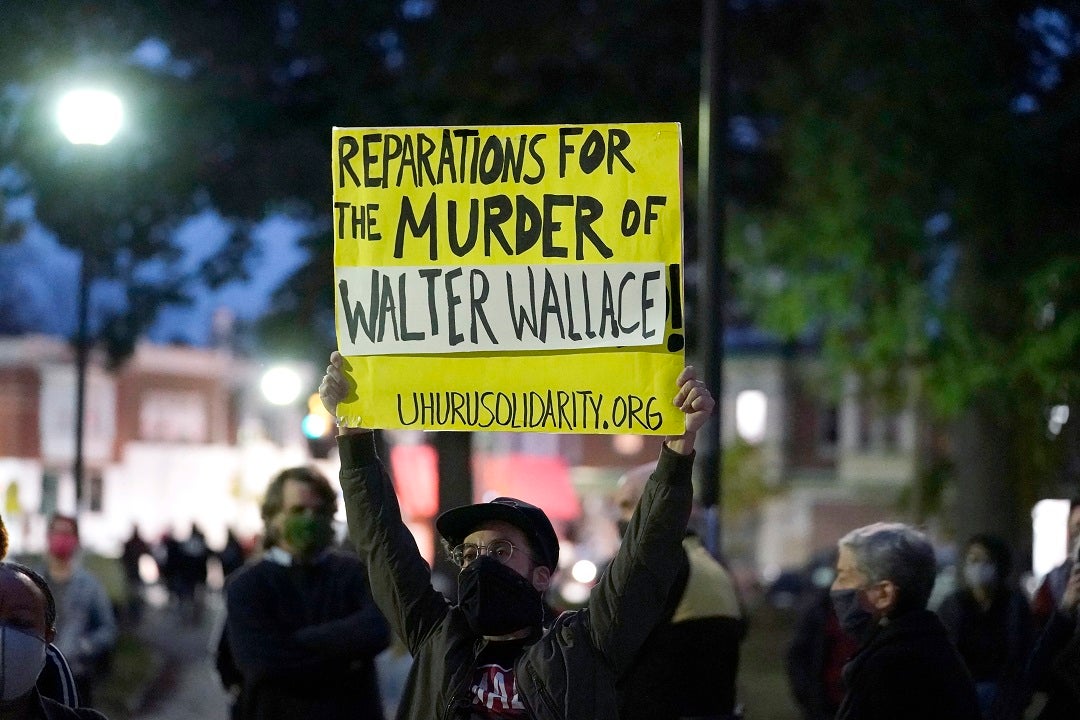

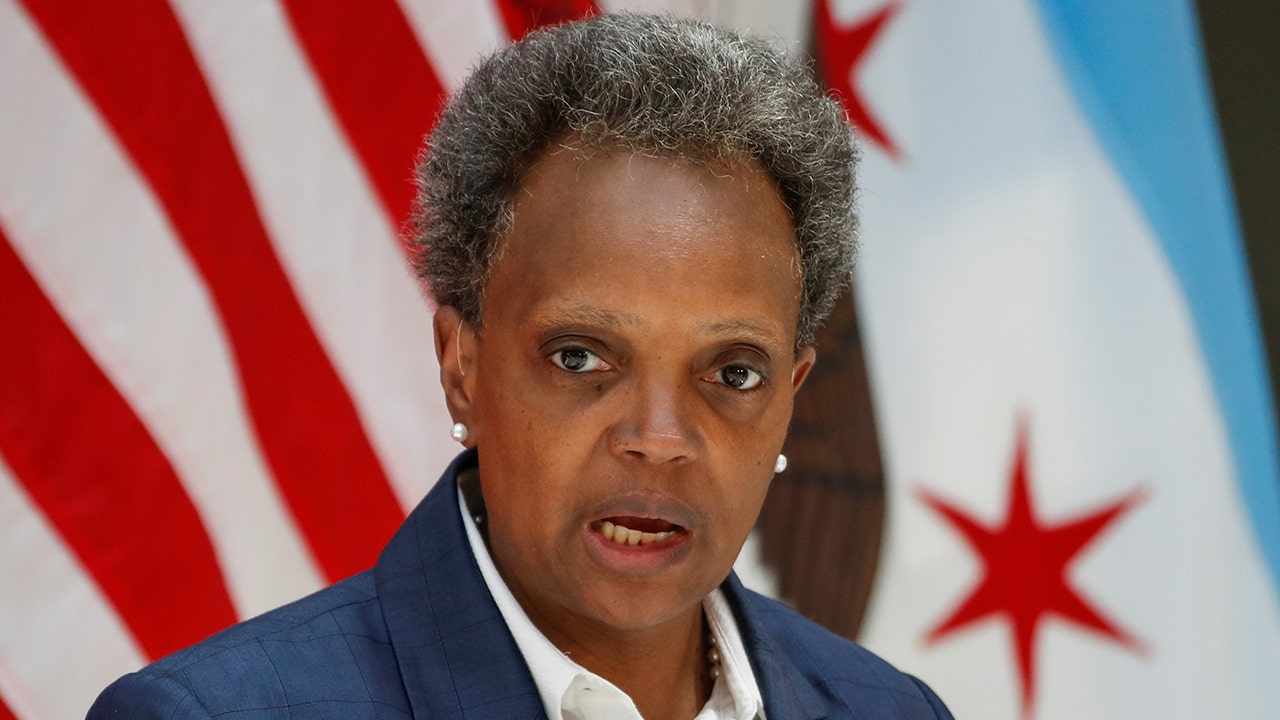






These are the top 10 Pittsburgh Steelers defensive players of all time. The Steelers have always been known for tough defense and these are the men that built that reputation.
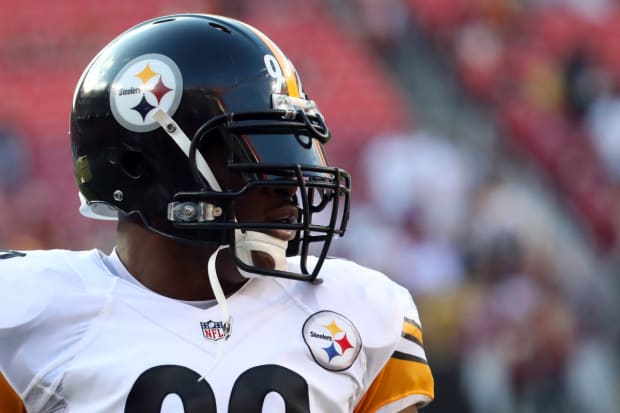
There are two ways to win a football game: score more points than your opponent or prevent them from scoring more points than you. For the last fifty years, the Steelers have excelled at the latter.
During the ‘70s, the Steelers' Steel Curtain defense was a 4–3 scheme with a dominant front four, three athletic linebackers and hard-hitting defensive backs. The ‘90s ushered in the Blitzburgh era, marked by hyper-aggressive linebackers who relentlessly ran down quarterbacks. During the Super Bowl years of the mid-2000s, the addition of a roving, tenacious, strong safety made the Steelers defense even more dangerous.
The Steelers defense has ranked in the top five for points allowed in a season 17 times since 1972. During that same period, Pittsburgh has won six Super Bowls and eight AFC championships. Even during the pre-Super Bowl era, when the Steelers rarely posted a winning season, they still fielded powerful defenses. In 1957, the Steelers ranked first in the NFL for yards allowed and second for points allowed.
The players on this list are the best Steelers defensive players of all time. They made the cut based on:
Ultimately, these players on this list are not only the greatest defensive players in Steeler franchise history but also some of the best the NFL has ever seen.
Defensive Back, 1951–59
Today, Jack Butler is somewhat of an unsung hero from pre-Super-Bowl-era Steelers lore. While it is true that the franchise struggled through most of its early history, there were bright spots and a few superstars, and Butler was one of them.
In nine seasons, he intercepted an impressive 52 passes and took four of them back for touchdowns. He ranks second in franchise history for career interceptions, behind only Mel Blount. He made four Pro Bowls and three All-Pro teams even though the Steelers could only put together two winning seasons during Butler’s tenure.
Butler finally joined other great
Steelers in the Hall of Fame when he was enshrined with the class of 2012, more than 50 years after his retirement from the NFL. He is an all-time Steelers great from a time when greatness was hard to come by.Jersey Number: 80
Accolades
Stats
Linebacker, 1993–95
It is tough to decide where Kevin Greene should rank among the best Steelers defensive players. He is a Hall of Famer and one of the top linebackers of all time, a pass-rushing machine with a nonstop motor. He played opposite fellow outside linebacker Greg Lloyd in an aggressive 3–4 defense, and the pair pummeled quarterbacks for three amazing seasons in Pittsburgh. Greene’s time in the Steel City culminated in a trip to Super Bowl XXX, an achievement he played no small part in.
On the other hand, he only spent three seasons in Pittsburgh before moving on to the Panthers after the Super Bowl season of 1995. For that reason alone, it seems unfair to rank him higher than other Steelers greats who spent all or most of their careers in the black and gold. Greene is one of those players that Steeler Nation sure would have liked to have stuck around longer.
Jersey Number: 91
Accolades
Stats
Defensive Tackle, 1950–63
Like Jack Butler, Ernie Stautner was a Hall-of-Fame-caliber defensive player during an era when the Steelers rarely posted a winning season. Undersized at only 230 pounds, he made up for it with toughness and tenacity. Thanks to his gritty style of play, Stautner and players like him began to cultivate the reputation for tough, hard-hitting defensive football that the Steelers are still known for today.
Stautner made the Pro Bowl roster nine times and the All-Pro team once in his 14-year career. In 1964, the Steelers retired his No. 70 jersey. For a long time, he was the only player in Steeler franchise history to have his jersey retired by the franchise, though Joe Greene joined him in that honor in 2014. Ernie Stautner was enshrined in the Hall of Fame with the class of 1969.
Jersey Number: 70
Accolades
Stats
Cornerback, 1970–83
Mel Blount was one of the toughest cornerbacks of his era. At 6’3” tall, he towered over most wide receivers and his physical playing style fit in perfectly with Pittsburgh's Steel Curtain defense. Blount’s aggressive abuse of receivers eventually led to a rule change and today, defensive backs are no longer allowed to contact receivers more than five yards beyond the line of scrimmage.
Blount played 200 games as a Steeler, intercepted 57 passes and made five Pro Bowls and two All-Pro teams. In 1975, he earned the award for NFL Defensive Player of the Year, and throughout the ‘70s, he helped the Steelers win four Super Bowls. Blount was enshrined in the Hall of Fame with the class of 1989.
Jersey Number: 47
Accolades
Stats

Linebacker, 2002, 2004–12, 2014–2017
Linebacker James Harrison chased down quarterbacks for 14 seasons with the Steelers. He is the franchise’s all-time leading pass rusher with 80.5 sacks, and he played a major role in two Super Bowl championships. He made five Pro Bowls and two All-Pro teams during 177 games as a Steeler and he was named NFL Defensive Player of the Year in 2008. Harrison's 100-yard interception return in Super Bowl XLIII helped solidify one of the biggest wins in Steelers' history.
Harrison took the long road to NFL stardom and struggled to make the roster with both the Steelers and Ravens as a young player. He spent some time with the Rhein Fire of NFL Europe before returning to the Steelers and eventually becoming a full-time starter in 2007. The rest is history, as Harrison went on to become one of the most dangerous pass rushers in the NFL and a major problem for any offensive coordinator that faced the Steelers.
Jersey Number: 92
Accolades
Stats
Cornerback, 1987–96
Woodson was a cornerback and return man with blazing speed. Drafted by the Steelers in 1987, he made his first of six straight Pro Bowls in 1989. In 10 seasons as a Steeler, he made a total of seven Pro Bowls and was voted an All-Pro five times. He intercepted 38 passes and returned five for touchdowns. Woodson was awarded the Defensive Player of the Year in 1993.
As a return man, Woodson ran back two kicks and two punts for scores during his time with the Steelers. He was a star player during a time when the Steelers had few and a scoring threat any time he got his hands on the ball. Because of Woodson and other players in the early ‘90s, the Steelers were able to return to their former glory and make the playoffs under new head coach Bill Cowher. Woodson missed the 1995 regular season with a knee injury but still managed to play in the Super Bowl that year. Woodson was inducted into the Hall of Fame in 2009.
Jersey Number: 26
Accolades
Stats
Linebacker, 1971–82
Jack Ham was not only the best outside linebacker ever to put on a Steelers uniform, but he was also one of the best in NFL history. He came to the Steelers in 1971 as part of a draft class that included safety Mike Wagner and defensive tackle Ernie Holmes, two more defensive stars who, along with Ham, were part of the Steelers dynasty of the '70s.
Ham made eight straight Pro Bowls and six straight All-Pro teams in his 12 seasons with the Steelers. He was an excellent all-around athlete with the strength to handle blockers, the speed to cover running backs and the intelligence to make the right decisions. He was enshrined in the Hall of Fame with the class of 1988.
Jersey Number: 59
Accolades
Stats

Safety, 2003–14
As a Steelers fan, it is fun to imagine how much sleep offensive coordinators must have lost during the nights before facing Troy Polamalu and the Pittsburgh defense. While the Pittsburgh pass rush and run defense were highly ranked in the mid-2000s, Troy Polamalu was the heart and soul of the defense.
Polamalu was an unpredictable terror with the freedom to make made bold decisions that offenses often didn’t expect. In his prime, he seemed to be everywhere at once and there was little an opposing quarterback could do to avoid him. During 12 seasons, he helped the Steelers win two Super Bowls and three AFC championships. He made eight Pro Bowls and four All-Pro teams and was named Defensive Player of the Year in 2010. He intercepted 32 passes, recovered seven fumbles, and in 158 games, he scored five defensive touchdowns.
Jersey Number: 43
Accolades
Stats
Linebacker, 1974–84
As a rookie, Jack Lambert filled in at middle linebacker when starter Henry Davis got injured. Davis never got his job back. Lambert earned Defensive Rookie of the Year in 1974, and Defensive Player of the Year in 1976. Throughout 11 seasons, he made nine Pro Bowls and six All-Pro teams.
Lambert was a terrifying presence with missing front teeth and a perpetual scowl on his face. He wore huge shoulder pads with a neck roll, and at 6’4”, he loomed over quarterbacks before the snap like a dark, menacing storm cloud. In reality, he was an undersized linebacker even for his era. Though listed at 220 pounds, according to some accounts, he was much lighter.
It didn’t matter. Lambert was ferocious on the field and seemed to treat every play like a street fight. He set the tone for an unforgiving Pittsburgh defense that won four Super Bowl championships for the Steelers. Today he is regarded as one of the best middle linebackers ever to play the game.
Lambert was enshrined in the Hall of Fame with the class of 1990.
Jersey Number: 58
Accolades
Stats
Defensive Tackle, 1969–81
Though it might be hard to imagine today, the years before the arrival of head coach Chuck Noll in 1969 were dark days for the Steelers. With the exception of a few years here and there, for the better part of four decades, the Steelers were rarely able to cobble together a winning season.
In 1969, Noll drafted a defensive tackle named Joe Greene, and the tide began to turn. Greene was named Defensive Rookie of the Year in 1969, and the Steelers continued to draft well over the next few years. By 1972, the Steelers had their first winning season since 1963 and defeated the Raiders for the franchise’s first-ever playoff win. In 1974, the Pittsburgh Steelers won the Super Bowl.
The Steelers won three more Super Bowls during the 1970s and are widely considered the Team of the Decade. Today, Pittsburgh is one of the most successful NFL franchises in history. It all started with Joe Greene.
“Mean” Joe Greene played for 13 seasons in Pittsburgh. He was named NFL Defensive Player of the Year in 1972 and '74, and he made an amazing 10 Pro Bowls and four All-Pro teams. Greene was enshrined in the Hall of Fame in 1987. In 2014, he joined Ernie Stautner as one of two Steelers to ever have their jersey numbers officially retired by the organization.
Jersey Number: 75
Accolades
Stats
Joe Greene is the greatest Steelers player of all time and is regarded as one of the best defensive tackles ever to play in the NFL. He made more Pro Bowls than any other Steeler in history and earned Defensive Player of the Year twice. He was a hard-nosed player who didn’t tolerate losing and set the tone for the Steel Curtain defense.

Defensive End, 1969–81
Greenwood arrived in Pittsburgh with the 1969 draft—the same year as Joe Greene. The pair lined up alongside each other from 1969 to '81 and made up half of the original Steel Curtain defensive line. Greenwood made six Pro Bowls and two All-Pro rosters. Many Steelers fans believe he deserves to be in the Hall of Fame.
Safety, 1974–87
Shell is an old-school Steeler who was finally inducted into the Hall of Fame in 2020. He helped win four Super Bowls and intercepted 51 passes in his 14-year career. He made the Pro Bowl five times and All-Pro three times.
Linebacker, 1988–97
Lloyd was an intimidating linebacker with a bad on-field attitude who would have fit in perfectly with the Steelers of the 1970s. He made five Pro Bowls and three All-Pro teams as a Steeler and racked up a total of 53.5 sacks. Lloyd helped the Steelers make it back to the Super Bowl in 1995 where they lost to the Cowboys.
Linebacker, 1994–2003
Gildon’s 77 career sacks rank him second behind James Harrison in franchise history. He was a prototypical Steelers pass rusher who made three Pro Bowls and one All-Pro team during his time in Pittsburgh.
Defensive Back, 1989–98
Lake was a linebacker in college who became a Pro-Bowl safety in the NFL. He had an All-Pro season at cornerback as well when Steelers cornerback Rod Woodson left and Coach Bill Cowher asked Lake to fill in. During his time in Pittsburgh, Lake made the Pro Bowl four times and All-Pro once.
Linebacker, 1999–2006
Porter was an aggressive pass rusher who tallied 60 sacks during his eight years as a Steeler, putting him third in team history. He made three Pro Bowls and one All-Pro roster as Steeler and helped Pittsburgh win a Super Bowl in 2005.
Mel Blount (1970-1983): 57
Mel Blount (1975): 11
James Harrison (2002–17): 80.5
James Harrison (2008): 16
Ernie Stautner (1950–63): 3
Bill McPeak (1949–57): 3
Most Steelers fans have heard about the Steel Curtain defense. It has become a term practically synonymous with Pittsburgh football, but it is occasionally misused and misunderstood. The era of the Steel Curtain was a specific time period in the 1970s, and while it is poetic to use the term for modern Steelers defenses, it really isn't accurate.
The Steel Curtain often is used to refer to the entire Steelers defense of the '70s Super Bowl period, a definition that is acceptable in the eyes of most Steelers fans. However, Steelers sticklers will tell you the term Steel Curtain refers only to the front four defensive linemen.
These four players teamed up from 1971 to '77, making for one of the greatest defensive lines in NFL history. Holmes left the team in '77 and was replaced by defensive tackles John Banaszak, Gary Dunn and Steve Furness for the final two Super Bowls championships of the era.
They say that defense wins championships, but this may no longer be true in the modern NFL. I'm not convinced an NFL team can win a Super Bowl today without a great quarterback and a powerful offense. Even the best defenses struggle to contain the top-level, high-scoring offenses in the modern-era NFL.
But if you do happen to have a great quarterback and an offense capable of putting four touchdowns on the board every game, a strong defense can still make a big difference. Games in today's NFL are often battles of attrition, and stopping your opponent from scoring more points than you is still a valid game plan.
The Steelers of the '70s stopped offenses in their tracks with a tenacious front four called the Steel Curtain. Blitzburgh of the '90s relentlessly chased down quarterbacks. The Steelers defense of the mid-2000s confused opponents with a ferocious pass rush and an unpredictable All-Pro strong safety.
The Steelers of today still play great defense . . . maybe even championship caliber. But without an offense that can put points on the board, they may never achieve what their predecessors had.
Time will tell. The NFL is always changing, and defenses today have more to worry about than any other time in the history of the league.


Bridgewater took a blow to the head while being sacked, causing him to leave the game. He eventually returned in the fourth quarter.
Late in the third quarter of the Panthers' Thursday Night Football game against the Falcons, Carolina quarterback Teddy Bridgewater suffered a blow to the head from Atlanta pass rusher Charles Harris. Bridgewater exited the game and was replaced by backup P.J. Walker, though he eventually returned in the fourth quarter.
Harris was penalized and ejected from the game. The penalty occurred on third down and extended Carolina's drive, which ended with a 39-yard field goal from Joey Slye, cutting Atlanta's lead to 19-17.
To that point, Bridgewater was 10-for-15 for 112 yards and a touchdown. He also rushed three times for 22 yards.
Walker made a name for himself during the short-lived XFL season, which was eventually canceled because of the pandemic. He led the Houston Roughnecks to a 5-0 record before signing with Carolina in March, reuniting him with his former college coach Matt Rhule, who coached Walker at Temple from 2013-16.

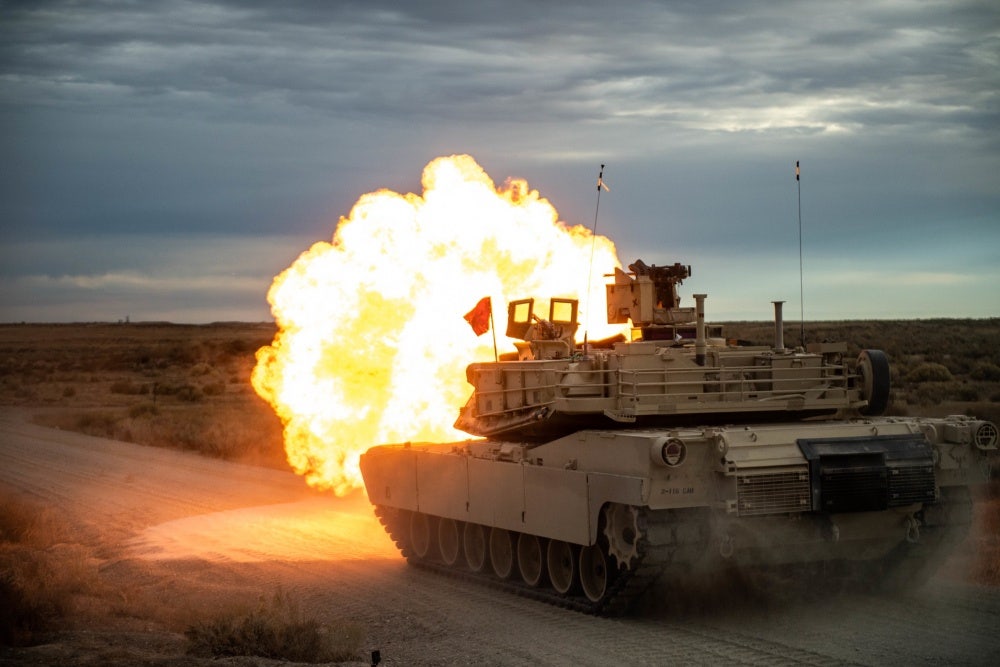











Arians was impressed with Brown's first workout since signing with Tampa Bay. Brown is eligible to play in Week 9 after his personal conduct suspension expires.
Following his team's risky decision to sign wide receiver Antonio Brown, Buccaneers coach Bruce Arians said Brown "looked fantastic" in his first workout with Tampa Bay,
per ESPN's Jenna Laine."He looks fantastic. I think we had really good conversations today, he and I," Arians said Wednesday. "He was in the meetings and everything. And he's working with Anthony Piroli and the strength staff. He looks in great shape. Yeah, ready to go next week."

Brown's eight-game suspension for violating the league's personal conduct policy ends after this week, making him eligible to play in the Bucs' home game on Nov. 8 against the Saints.
Arians's decision to sign Brown raised some eyebrows around the league after the coach had previously said such a pairing would not happen back in March. Then, Arians shot down the idea that the Bucs would sign Brown, saying, "I just know him, and it's not a fit in our locker room." In January 2019, Arians said Brown had "too much diva" going on during an appearance on ESPN NFL insider Adam Schefter's podcast.
A key factor in the team reversing its course is Brown's relationship with quarterback Tom Brady. Brady, who was briefly teammates with Brown in New England, was asked by Laine to expand upon his relationship with Brown, and why the six-time Super Bowl champion has actively vouched on his behalf.
"Over the years, when you transition from a younger player to an older player, you really want to see guys succeed and you want to see guys do well. It’s always about maximizing your potential," Brady said. "I had a lot of people support me over the years, realizing that I was far from where I needed to be, and they would guide me and provide me with the help I needed as a player to reach my potential. And I think that's how you impact people. We talk about it a lot as professional athletes—how you impact people on the field is one thing, how you impact people off the field is another...
"You just try your best everyday, realizing that a lot of people weren’t born with the same advantages that I had growing up. They weren’t born with the same background, the same support systems that I had. I think when you recognize that, and you bring that to relationships, all you can do is the best you can do...I want to see other guys succeed, and a lot of joy in my experience comes from seeing other people be their best, and seeing people succeed in ways that can set their family up."
Brown, 32, has been accused of sexual assault by multiple women since September 2019. He pled no contest to charges related to his moving truck driver battery case earlier this year. Brown appeared in one game with the Patriots in 2019 before being released on Sept. 20.






